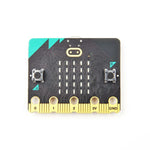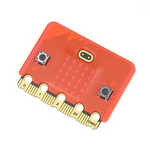This device is based on a scientific principle: when a person is nervous, the electrical conductivity of their skin changes. By monitoring changes in finger conductivity through a soil moisture sensor, the system can determine whether the subject is in a tense state.
Although this is only a simple simulation, it demonstrates the broad potential applications of smart home technology—from physical environment monitoring to psychological state perception.
Chapter 11: System Integration—The Central Nervous System of the Smart Home
With the completion of various smart devices, I faced a new challenge: how to make these independent systems work together to form a unified smart home network.
I decided to use micro:bit as the central nervous system of the smart home, programming each device to communicate and coordinate with each other. For example, when the intrusion detection system is triggered, it not only sounds an alarm but also automatically adjusts the lighting system to illuminate relevant areas; when the temperature-controlled fan starts, the window system decides whether to open or close based on the indoor-outdoor temperature difference.
The effect of this system integration is astounding: every part of my house seems to come to life, conversing with each other and working together to maintain a comfortable, safe, and efficient living environment.
Chapter 12: Reflection and Outlook—The Future of Smart Homes
Looking back on this journey of creating a smart home, I am deeply impressed by the power and flexibility of the micro:bit platform. From the initial simple voice-activated light to later complex integrated systems, each project gave me a deeper understanding of smart homes.
Smart homes are not about replacing humans with high technology but about enhancing the capabilities of the home to better serve its residents. A good smart home system should be invisible and natural; it should not add complexity to life but make life simpler, more comfortable, and safer through silent operation.
In this process, I also realized some important design principles:
First, user-friendliness is crucial. The most successful technologies are often those that can be used naturally with little to no learning. The reason my smart wardrobe was so popular with my family is precisely because it retained the traditional touch-to-open method, only making the process easier.
Second, gradual improvement is more effective than a complete overhaul. I did not try to create a complete smart home system all at once but started with a small project, gradually adding new features and continuously optimizing the existing system.
Finally, reliability is the lifeline of a smart home system. A smart device that occasionally fails is more frustrating than a traditional device because it creates unmet expectations.
Looking to the future, I see endless possibilities. With the development of IoT technology, smart homes will become more intelligent and personalized. Perhaps in the near future, our homes will be able to predict our needs, automatically adjusting environmental parameters after learning our habits; maybe they will connect with our health devices to optimize the living environment based on our physiological state.
But no matter how technology develops, the core of smart homes remains unchanged: to create a better living experience for humans. The value of technology lies not in its complexity but in how it serves human needs and well-being.
Epilogue: Weaving the Magic of a Smart Home
Today, my home has become a truly smart space. Every morning, I wake up to soft lighting; during the day, the house automatically adjusts temperature, humidity, and ventilation based on environmental changes; at night, the security system silently guards the home. None of this is distant future technology but a reality achieved through the micro:bit smart home kit.
The most fascinating part of this process is that I am not only a user of the smart home but also its creator. Every function, every response comes from my design and implementation. The joy of creation is unmatched by buying ready-made smart devices.
If you are also interested in smart homes, I encourage you to start with a small project. Don't worry about insufficient knowledge or experience—every expert was once a beginner. What's important is to take action and create a smarter, more comfortable home with your own hands.
After all, the best home is not the one with the most expensive equipment but the one that best reflects the needs and personality of its residents. With micro:bit and a little creativity, everyone can weave their own smart home magic.
This is the true charm of smart homes: it's not about the technology itself but about how technology helps us create better living spaces, making home truly our sanctuary and source of happiness. In this sense, every smart home project is a creative expression, an unremitting pursuit of a better life.









